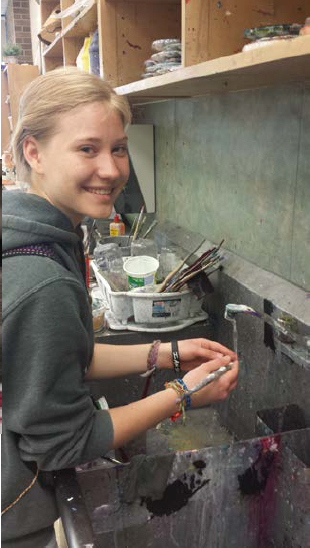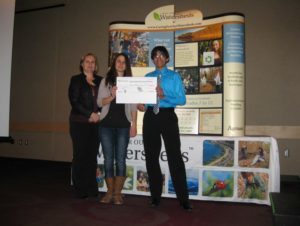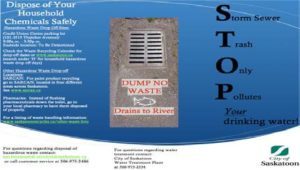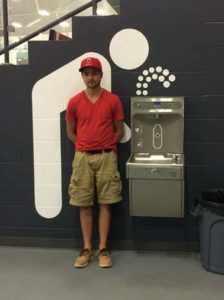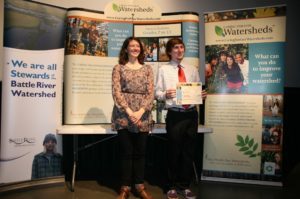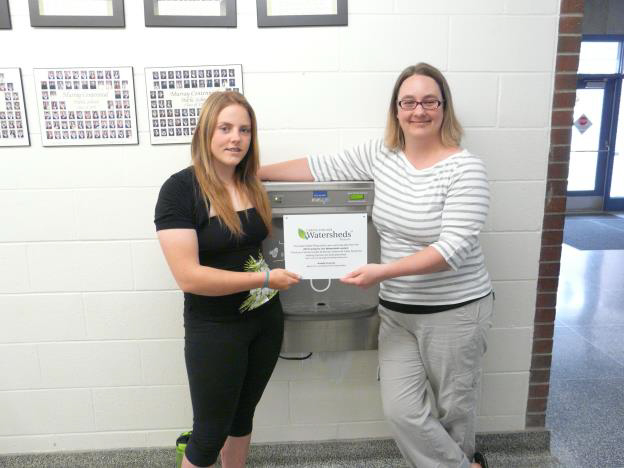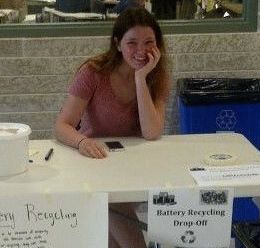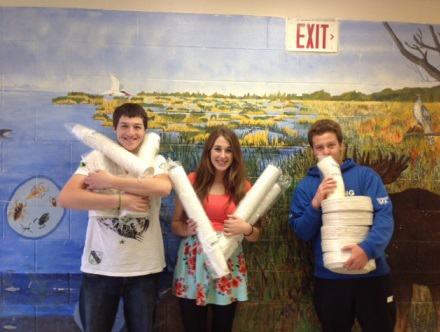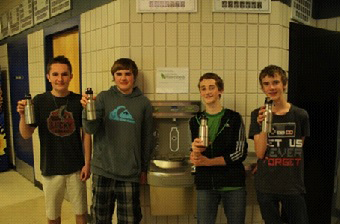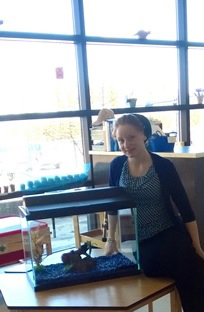2014 Lethbridge, Alberta, Canada
In 2014, the second-place winner of The Caring For Our Watersheds competition, Lethbridge High School student Kelsey Armstrong, decided to tackle the issue of debris build-up around l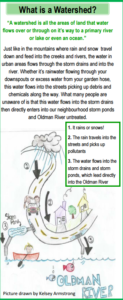 ocal storm drains in her community. Kelsey was concerned that debris entering our watershed through storm drains was impacting the quality of the Oldman River. As a solution, Kelsey designed the “Storm Drain Survival Kit”.
ocal storm drains in her community. Kelsey was concerned that debris entering our watershed through storm drains was impacting the quality of the Oldman River. As a solution, Kelsey designed the “Storm Drain Survival Kit”.
The Storm Drain Survival Kit is made up of: garbage bags, doggie bags, a trowel, gloves, a Prairie Urban Garden plant book and an information brochure, all contained within a reusable shopping bag.
Over six hundred Storm Drain Survival Kits were distributed to the community at events such as: the Lethbridge Green List Celebration, the Annual Knapweed Pull, Prairie Garden Urban Tours, local farmer’s markets and home and garden shows. Through Kelsey’s hard work and commitment to sharing information on storm water awareness, this project was far-reaching and has had an on-going impact in her community.
Along with support from the Caring For Our Watersheds program, Kelsey’s project received funding from The Community Foundation Lethbridge—Youth In Action, the Oldman Watershed Council and the City of Lethbridge.
